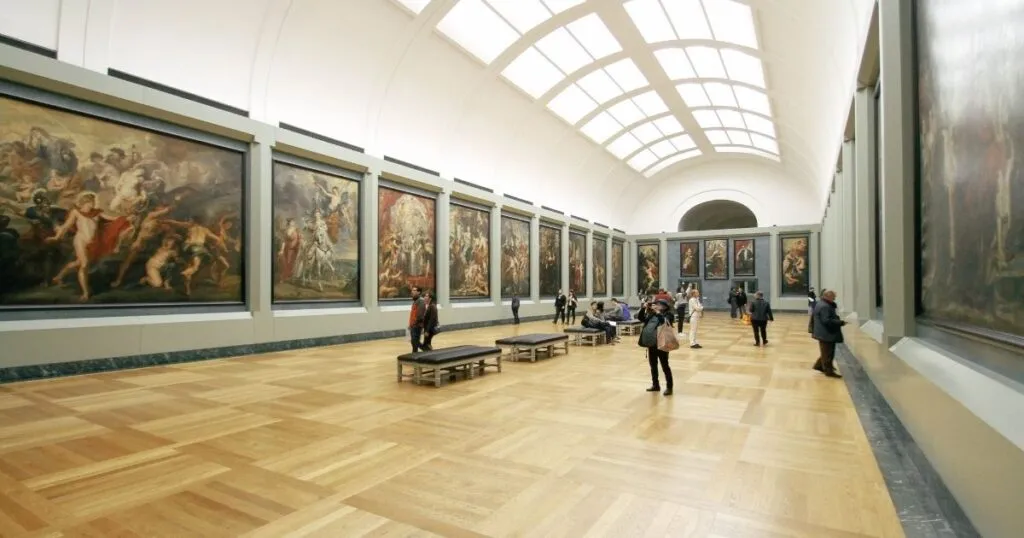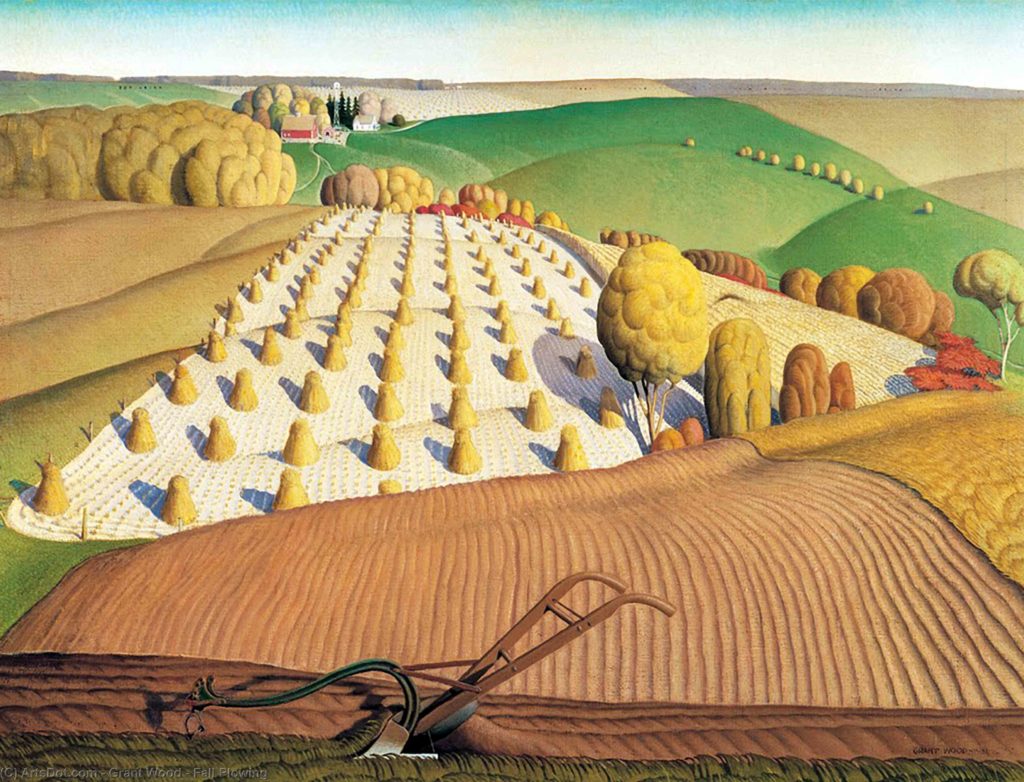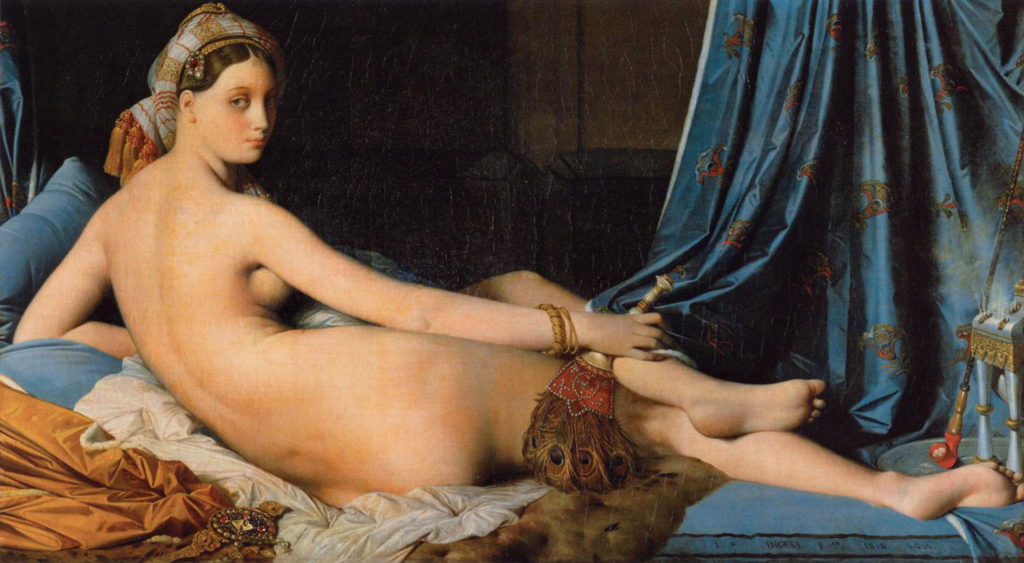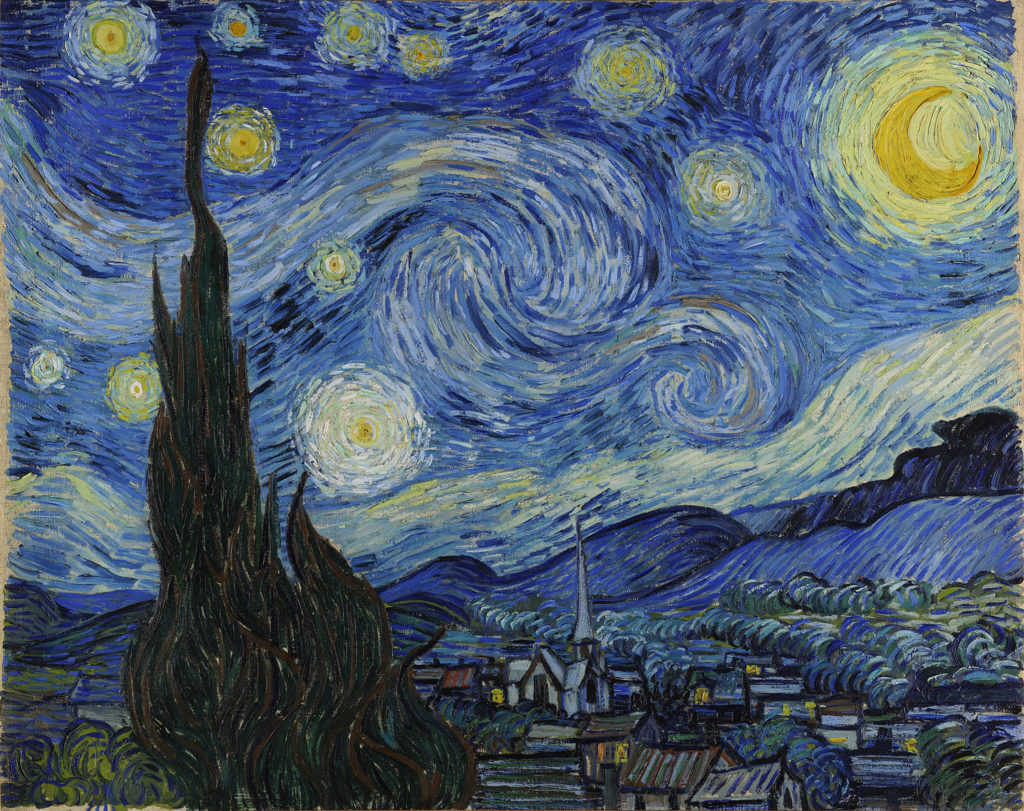The Art and Craft of Analysis Pg 55 Answers

15 Essentials for Every Art Form
What if y'all had the keys to the artistic kingdom? With each of these essentials for making fine art, that is exactly what y'all have. Understanding and applying the building blocks of art (or the elements and principles of fine art, as they are often called) is what takes an artist from beginner to master.
In lodge to understand, deftly critique, and practice your chosen art form, y'all need to know the key concepts that it is built upon. Familiarity with elements of art like color and line and principles of art (proportion, rhythm, and dissimilarity among others) is what gives artists that fluency. With your noesis of these, you lot volition e'er be able to discover the joy and excitement that can surround art…and for art lovers in that location is nothing more appealing than that.
Elements of Art
Remember of the elements of art equally the arrows in your quiver or tools in a toolbox. Yous use them individually and in combination for any art making try. For the visual arts, these are visual elements: color, course, line, shape, space, texture, and value.
Color
A three-pronged element of art: hue, value and intensity.
Hue is the color itself.
Value is the hue's lightness or darkness and changes when white or black is added to information technology.
Intensity is the aspect of brightness and purity of a color. High intensity colors are bold and bright. Low intensity colors are faint and duller.

Fall Plowing by Grant Wood
Course
For painters and draftsmen, class is the element of art that renders a three-dimensional course in ii dimensions. In a lot of ways it is the heart of an art object — the form itself. It can enclose a volume and includes height, width and depth. A cube, a sphere, a cylinder and a pyramid are all different forms. Forms can also be gradeless — abstracted and free-flowing.
Line
Marks made on a surface are known equally line. They get-go at a point and motility forth, creating space as they go. Lines tin be two- or three-dimensional, describing form or the form itself, unsaid, or abstruse. Creating a series of parallel lines to betoken class is a technique known every bithatching.Crosshatching indicates more than one fix of these lines laid overtop of each other at angles to model and bespeak tone.
Shape
The element of art that is two-dimensional, apartment, or limited to meridian and width. Usually a shape is enclosed.
Space
Space is the element of fine art through which both positive and negative areas are divers or a sense of depth is achieved in a work of fine art.
Texture
Texture defines the style an art object or an element in a composition feels or looks as if information technology would feel if touched.

Thousand Odalisque by Jean Auguste Dominique Ingres
Principles of Fine art
If the elements of fine art are your tools, the principles of art arehow yous put them to work. It is where the style of art manipulates its substance. Rhythm, harmony, balance, dissimilarity, movement, proportion, and diversity are the principles of fine art.
Rhythm
This principle of fine art describes the motion in or of an artwork. Rhythm is created past the variety and repetition of elements in a work of art that come together to create a visual tempo or beat.
Harmony
This is achieved when the elements of an artwork come together in a unified way. Certain chemical element are repeated yet all the same await and feel similar. Not monotony and non chaos, harmony is that perfectly honed combination of both.
Balance
Artists combine elements to add together a feeling of equilibrium or stability to a work of art. Symmetry and asymmetry are manifestations of balance.

Starry Nighttime by Vincent van Gogh
Dissimilarity
Areas of contrast are where a viewer's heart are ordinarily first drawn. Artists volition combine elements to stress the differences betwixt those elements.
Movement
Movement is used to create the look and feeling of action in an artwork. Information technology guides the viewer'due south eye throughout a slice. A sense of movement can be varied lines, repetition of elements, and gestural mark-making among many more.
Pattern
This is the uniform repetition of an chemical element of art or combination of elements. Anything can be turned into a blueprint through repetition.
Proportion
Inside the realm of the elements and principles of art, proportion is the relationship of elements in an artwork to the whole and to ane some other.
Variety
The principle of fine art concerned with diversity or contrast is that of multifariousness. Diverseness is brought about by using unlike colors, sizes and shapes in a piece of work of art. It is the partner of unity. Artists seek the balance between the two.
More Elements and Principles of Art
If this guide has been a refresher in the very all-time of means, then yous know you lot are ready for the side by side pace of your art journey. Put the elements and principles of fine art into practice in your next artwork. Arrive your all-time—and something you are proud of.
Interested in painting? Check out this video with Nancy Reyner, where she walks through a procedure of self-critique and improvement.
Source: https://www.artistsnetwork.com/art-techniques/composition/15-elements-and-principles-of-art/
0 Response to "The Art and Craft of Analysis Pg 55 Answers"
Postar um comentário